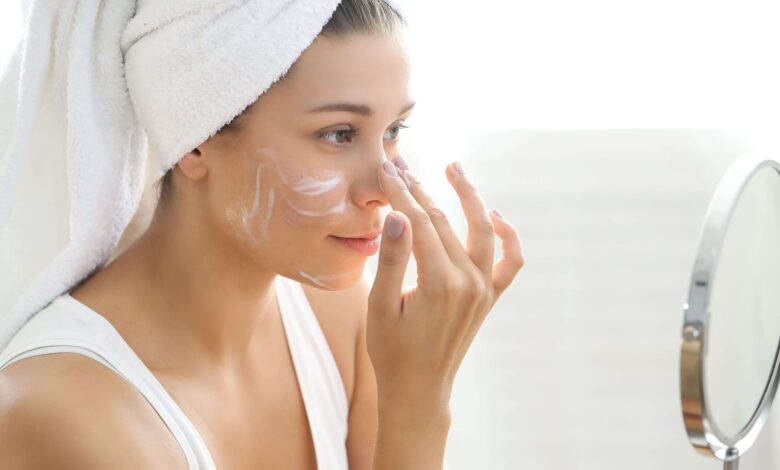How Can We Protect Our Skin from Climate Change?

Climate change has become a pressing issue affecting our planet and the way we live. As the Earth’s climate undergoes significant shifts, it has a profound impact on various aspects of our lives, including our skin health. Changes in temperature, increased UV radiation, and air pollution can all take a toll on our skin. In this article, we will explore effective strategies and skincare practices to protect our skin from the adverse effects of climate change.
Climate change refers to long-term shifts in weather patterns and global temperatures. These changes can lead to extreme weather events, rising sea levels, and alterations in ecosystems. While we often discuss the environmental and societal consequences of climate change, its impact on our skin is equally significant. Understanding how to protect our skin amidst these changes is crucial for maintaining its health and vitality.
Understanding the Impact of Climate Change on Skin Health
As the Earth’s climate evolves, it brings forth several challenges for our skin. Here are some key factors contributing to the impact of climate change on our skin:
Temperature Fluctuations
Rapid shifts in temperature can disrupt the delicate balance of our skin. Cold weather can cause dryness and flakiness, while hot weather can lead to excess oil production and breakouts. Extreme temperatures also cause blood vessels to constrict or dilate, potentially worsening conditions like rosacea.
Increased UV Radiation
Climate change has been linked to a rise in UV radiation levels. Exposure to UV rays can accelerate skin aging, cause sunburns, and increase the risk of skin cancer. Protecting our skin from harmful UV rays becomes crucial to maintaining its health and preventing long-term damage.
Air Pollution
Air pollution is another consequence of climate change that affects our skin. Pollutants in the air, such as particulate matter and toxic gases, can clog pores, promote inflammation, and contribute to the formation of wrinkles and dark spots. Minimizing exposure to pollutants is essential for preserving skin health.
Importance of Sun Protection
Shielding our skin from the sun’s harmful UV rays is paramount. Here are some effective sun protection measures to incorporate into your skincare routine:
Apply Sunscreen Daily
Choose a broad-spectrum sunscreen with an SPF of 30 or higher and apply it generously to all exposed skin. Reapply every two hours, especially if you’re spending extended periods outdoors.
Seek Shade
When possible, seek shade during the peak hours of UV radiation, typically between 10 am and 4 pm. This reduces direct exposure to the sun and decreases the risk of sunburn and UV-related skin damage.
Wear Protective Clothing and Accessories
Cover your skin with lightweight, breathable clothing that offers UV protection. Additionally, don’t forget to wear a wide-brimmed hat and UV-blocking sunglasses to shield your face and eyes from the sun’s rays.
Hydration and Moisture Barrier
Maintaining optimal hydration and a healthy moisture barrier is essential for protecting the skin from climate change-related damage. Follow these tips to ensure your skin stays hydrated:
Drink Sufficient Water
Stay hydrated by drinking an adequate amount of water throughout the day. Hydrated skin is more resilient and less prone to dryness and irritation.
Use a Hydrating Moisturizer
Choose a moisturizer that contains hydrating ingredients like hyaluronic acid and ceramides. Apply it twice a day to lock in moisture and strengthen your skin’s protective barrier.
Avoid Hot Showers
Long, hot showers strip the skin of its natural oils, leading to dryness and irritation. Opt for lukewarm showers instead and limit their duration to protect your skin’s moisture levels.
Pollution Protection
To safeguard your skin against the detrimental effects of air pollution, incorporate the following practices into your skincare routine:
- Cleanse your skin morning and night to remove impurities and pollutants that accumulate throughout the day. Use a gentle cleanser that won’t disrupt your skin’s natural balance.
- Introduce antioxidant-rich serums into your skincare regimen. These serums help neutralize free radicals caused by pollution and minimize the resulting skin damage.
- Apply a lightweight, non-comedogenic moisturizer or sunscreen as a protective barrier against pollutants. This physical barrier prevents particles from settling on your skin.
Antioxidant-Rich Skincare
Antioxidants play a crucial role in combating the damaging effects of climate change on the skin. Consider the following steps to incorporate antioxidant-rich skincare into your routine:
Vitamin C Serum
Vitamin C is a powerful antioxidant that helps brighten the skin, even out skin tone, and protect against free radicals. Look for serums containing stabilized vitamin C and apply them in the morning.
Green Tea Extract
Green tea extract is known for its potent antioxidant properties. Look for skincare products that contain green tea extract to help reduce inflammation and protect against environmental stressors.
Incorporate Berries and Leafy Greens
Consuming a diet rich in berries and leafy greens provides your body with a natural supply of antioxidants. These nutrients support overall skin health and combat the effects of climate change from within.
Nutrition and Diet
A well-balanced diet can enhance your skin’s resilience and protect it from climate change-related damage. Consider the following dietary tips for healthy skin:
Consume Omega-3 Fatty Acids
Include foods rich in omega-3 fatty acids, such as fatty fish, flaxseeds, and walnuts. These healthy fats help maintain the skin’s moisture levels and strengthen its natural barrier.
Increase Antioxidant Intake
Incorporate antioxidant-rich foods like berries, citrus fruits, dark chocolate, and leafy greens into your meals. These foods provide essential nutrients that protect your skin from oxidative stress.
Stay Hydrated
In addition to drinking water, consume hydrating foods like watermelon, cucumber, and celery. These water-rich foods contribute to your overall hydration and support healthy skin.
Adaptation to Changing Weather Conditions
As the climate changes, it’s essential to adapt your skincare routine to the prevailing weather conditions. Consider the following adjustments:
Cold Weather Protection
During colder months, use richer moisturizers to combat dryness and prevent moisture loss. Additionally, protect your skin with scarves, gloves, and other winter accessories to shield it from harsh winds.
Hot Weather Strategies
In hot weather, prioritize lightweight, oil-free skincare products that won’t clog your pores. Opt for gel-based moisturizers and non-comedogenic sunscreens to avoid excessive oiliness and breakouts.
Humid Environments
In humid climates, focus on oil control and maintaining a balanced skin pH. Use gentle exfoliants to unclog pores, and consider lightweight, mattifying moisturizers to prevent excessive shine.
Mindful Skincare Routine
A mindful skincare routine is crucial for protecting your skin from climate change and maintaining its health. Follow these practices for an effective routine:
Consistency is Key
Stick to a consistent skincare routine that includes cleansing, moisturizing, and sun protection. Consistency allows your skin to adapt and thrive, even amidst changing environmental conditions.
Patch Testing
Before incorporating new products into your routine, perform patch tests to ensure compatibility and avoid adverse reactions. Apply a small amount of the product on your inner forearm and monitor for any signs of irritation.
Tailor to Your Skin Type
Identify your skin type and select products that cater to its specific needs. Whether you have oily, dry, sensitive, or combination skin, using targeted formulations will optimize your skincare routine.
Clothing Choices and Accessories
Your clothing choices and accessories can provide an additional layer of protection against climate change effects. Consider the following tips:
UPF Clothing
Invest in clothing with UPF (Ultraviolet Protection Factor) to shield your skin from harmful UV rays. UPF clothing offers enhanced sun protection, especially when spending extended periods outdoors.
Sunglasses and Hats
Wear sunglasses that provide 100% UV protection to safeguard your eyes and the delicate skin around them. Additionally, wear wide-brimmed hats to shield your face, neck, and ears from direct sun exposure.
Protective Fabrics
Choose clothing made from tightly woven fabrics that offer natural protection against UV radiation. Darker colors and denser weaves generally provide better sun protection.
As climate change continues to impact our environment, protecting our skin becomes crucial for maintaining its health and vitality. By implementing the strategies discussed in this article, such as sun protection, hydration, pollution defense, and mindful skincare practices, you can effectively safeguard your skin from the adverse effects of climate change.
FAQs (Frequently Asked Questions)
Q1: Can climate change directly affect the appearance of my skin?
- Climate change can indirectly affect the appearance of your skin by increasing UV radiation, air pollution, and temperature fluctuations. These factors can contribute to skin dryness, premature aging, and other skin issues.
Q2: How often should I apply sunscreen to protect my skin from climate change?
- It is recommended to apply sunscreen every two hours, especially when spending time outdoors or during periods of high UV radiation. Reapplication is essential to maintain adequate protection.
Q3: Can a healthy diet really help protect my skin from climate change?
- Yes, a healthy diet plays a vital role in protecting your skin from climate change. Consuming antioxidant-rich foods and staying hydrated supports your skin’s natural defenses and overall health.
Q4: Are there specific skincare products designed to combat climate change effects?
- While there aren’t specific products exclusively designed for climate change effects, incorporating sunscreen, moisturizers, and antioxidant-rich serums can help protect and nourish your skin.
Q5: How can I adapt my skincare routine to changing weather conditions?
- Adapting your skincare routine to changing weather conditions involves using appropriate moisturizers, adjusting product textures, and incorporating protective measures like scarves or lightweight clothing.
In conclusion, protecting our skin from climate change requires a proactive approach. By prioritizing sun protection, maintaining hydration, adopting skincare practices to combat pollution, and adapting to changing weather conditions, we can ensure the health and resilience of our skin in the face of environmental challenges. Remember to be consistent, mindful, and embrace a holistic approach to skincare to achieve the best results.



